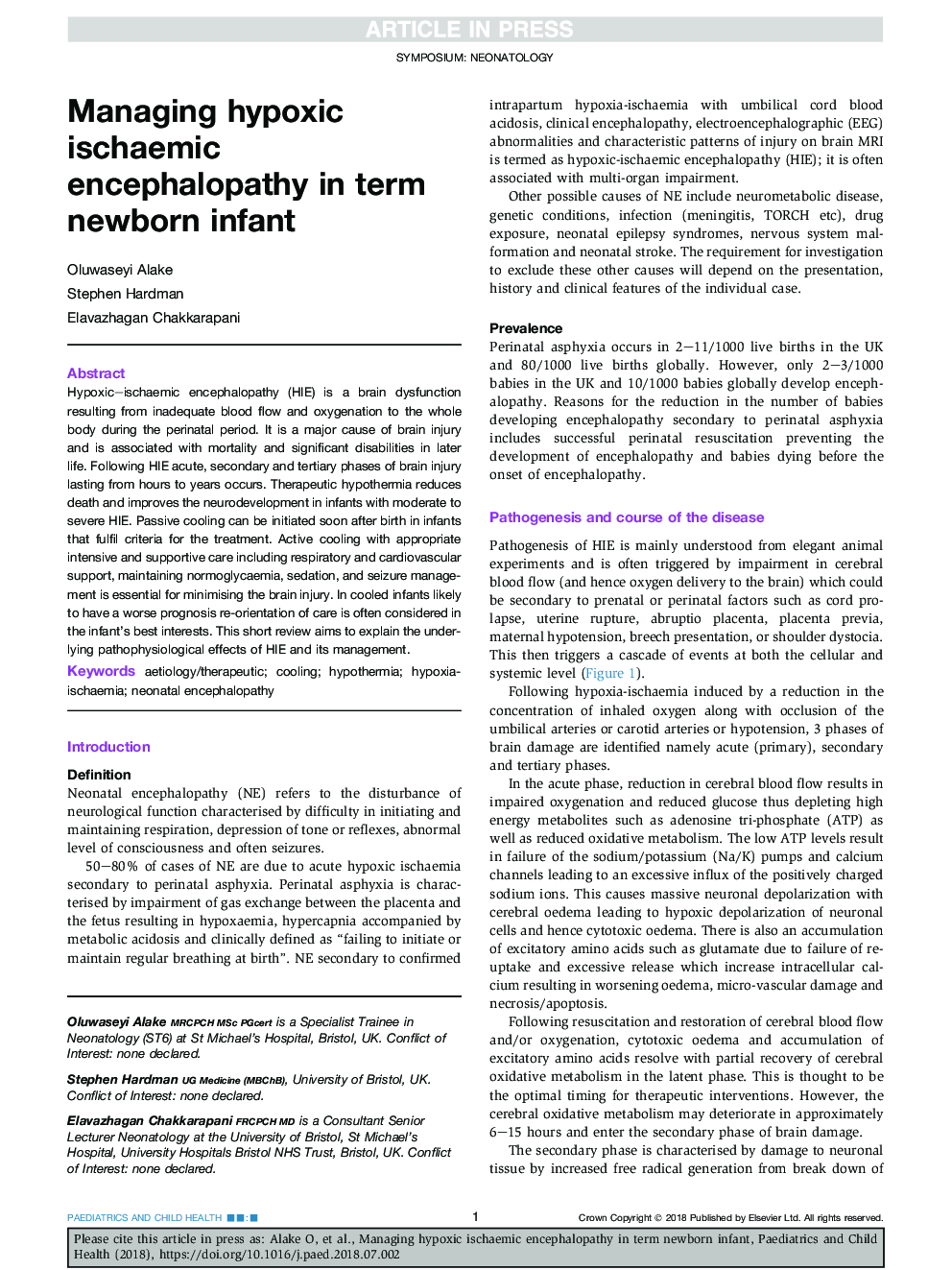| Article ID | Journal | Published Year | Pages | File Type |
|---|---|---|---|---|
| 8964764 | Paediatrics and Child Health | 2018 | 6 Pages |
Abstract
Hypoxic-ischaemic encephalopathy (HIE) is a brain dysfunction resulting from inadequate blood flow and oxygenation to the whole body during the perinatal period. It is a major cause of brain injury and is associated with mortality and significant disabilities in later life. Following HIE acute, secondary and tertiary phases of brain injury lasting from hours to years occurs. Therapeutic hypothermia reduces death and improves the neurodevelopment in infants with moderate to severe HIE. Passive cooling can be initiated soon after birth in infants that fulfil criteria for the treatment. Active cooling with appropriate intensive and supportive care including respiratory and cardiovascular support, maintaining normoglycaemia, sedation, and seizure management is essential for minimising the brain injury. In cooled infants likely to have a worse prognosis re-orientation of care is often considered in the infant's best interests. This short review aims to explain the underlying pathophysiological effects of HIE and its management.
Related Topics
Health Sciences
Medicine and Dentistry
Perinatology, Pediatrics and Child Health
Authors
Oluwaseyi Alake, Stephen Hardman, Elavazhagan Chakkarapani,
